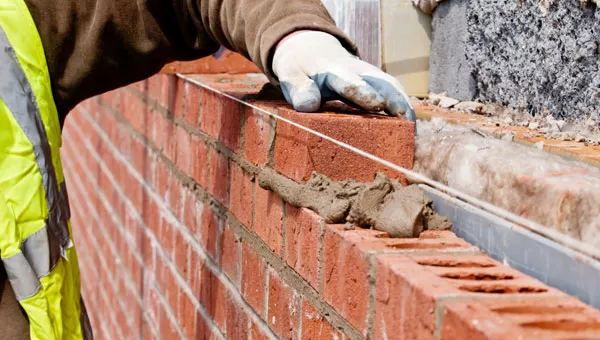Opening the Keys of Lasting Stonework Building Practices for Eco-Friendly Buildings
Amongst the myriad approaches to environmentally friendly building, sustainable stonework construction stands out as a tried and true and sturdy approach that holds a wealth of untapped capacity. From the option of materials to ingenious building and construction techniques, the secrets to accomplishing sustainability within masonry building are complex and fascinating.
Benefits of Sustainable Stonework Building And Construction
Embracing lasting stonework building and construction techniques not just minimizes environmental impact yet also supplies long-lasting economic benefits to building contractors and areas. By using materials like recycled blocks, obstructs, and stones, building contractors can significantly decrease the carbon footprint of their projects while advertising source effectiveness. Additionally, lasting masonry building and construction methods, such as proper insulation and thermal mass homes, can enhance power efficiency within structures, resulting in decreased functional expenses in time.
Furthermore, the resilience and resilience of stonework structures add to long-lasting economic benefits. Buildings constructed making use of lasting masonry practices usually need much less maintenance and fixing, converting to cost financial savings for building contractors and homeowner. The longevity of stonework products also makes certain that frameworks remain steady and safe, minimizing the demand for regular improvements or replacements.
Eco-Friendly Masonry Materials
Using eco-friendly masonry products is an essential step in the direction of enhancing the sustainability of building and construction methods and reducing ecological influence while making best use of lasting economic advantages. Sustainable masonry products are sourced, created, and used in a fashion that reduces total environmental impact. Products such as recycled blocks, reclaimed stone, and sustainable cinder block are coming to be significantly popular options for eco-conscious home builders. Recycled blocks, for instance, not just draw away waste from land fills but also require much less power to generate contrasted to brand-new blocks. Redeemed rock offers an unique visual allure while reducing the need for brand-new quarrying. Lasting concrete obstructs include recycled aggregates and may include better insulation residential or commercial properties, contributing to energy efficiency in buildings.
Furthermore, natural products like adobe, rammed earth, and straw bales provide superb thermal mass properties, minimizing the need for home heating and cooling down power. These products are commonly in your area available, advertising local economies and lowering transportation-related carbon exhausts. By choosing environment-friendly masonry materials, building and construction jobs can dramatically reduce their environmental footprint and add to the production of much healthier, much more lasting built atmospheres.
Energy-Efficient Stonework Strategies
Power efficiency plays a vital duty in boosting the sustainability of masonry construction techniques. One key energy-efficient masonry strategy is the use of thermal mass, which entails incorporating dense materials like concrete driveway slabs or brick his explanation into the building's structure to absorb and keep warmth.

Advancements in Sustainable Stonework
Recent developments in lasting stonework techniques have actually caused innovative strategies that are reshaping the construction sector. One such development is the development of self-healing concrete, which uses bacteria installed within the concrete to recover cracks autonomously. This development not only lowers upkeep expenses but also boosts the longevity of masonry frameworks, contributing to their sustainability.
Another notable innovation is using recycled aggregates in stonework building and construction - masonry contractor. By including materials such as crushed ceramic waste or recycled glass into concrete mixes, why not try this out building contractors can minimize the ecological effect of building and construction tasks while maintaining structural honesty. This practice not only draws away waste from land fills however likewise saves natural deposits, making it a key innovation in sustainable masonry construction
Moreover, the integration of electronic design devices, such as Structure Info Modeling (BIM), is reinventing the means stonework structures are prepared and built. BIM permits for even more specific estimations, minimized product wastage, and improved energy efficiency, eventually leading to more sustainable structure practices. These developments jointly signify an appealing future for lasting stonework construction in the era of environmentally friendly buildings.
Future Trends in Masonry Sustainability
With the cutting-edge strides made in sustainable stonework methods, the future patterns in masonry sustainability are positioned to additional reinvent the construction industry. One of the essential patterns forming the future of masonry sustainability is the increased integration of innovation. Innovations such as Building Details Modeling (BIM) and digital fact simulations are being made use of to enhance masonry building and construction procedures, bring about reduced product waste and enhanced energy performance in buildings.
Moreover, the growth of unique lasting products is readied to play a significant function in boosting the eco-friendliness of stonework building and construction. masonry contractor. Innovations like self-healing concrete, recycled accumulations, and bio-based binders are obtaining grip for their ability to decrease ecological influence while preserving architectural honesty

Final Thought
To conclude, lasting masonry building practices supply numerous benefits for green buildings. By making use of eco-friendly products and energy-efficient strategies, masonry can contribute to a more sustainable developed environment. Developments in lasting masonry are continually being established to additionally improve the ecological performance of buildings. Looking towards the future, the fad of stonework sustainability is anticipated to grow, leading to more eco-friendly and energy-efficient building and construction practices in the years to find.